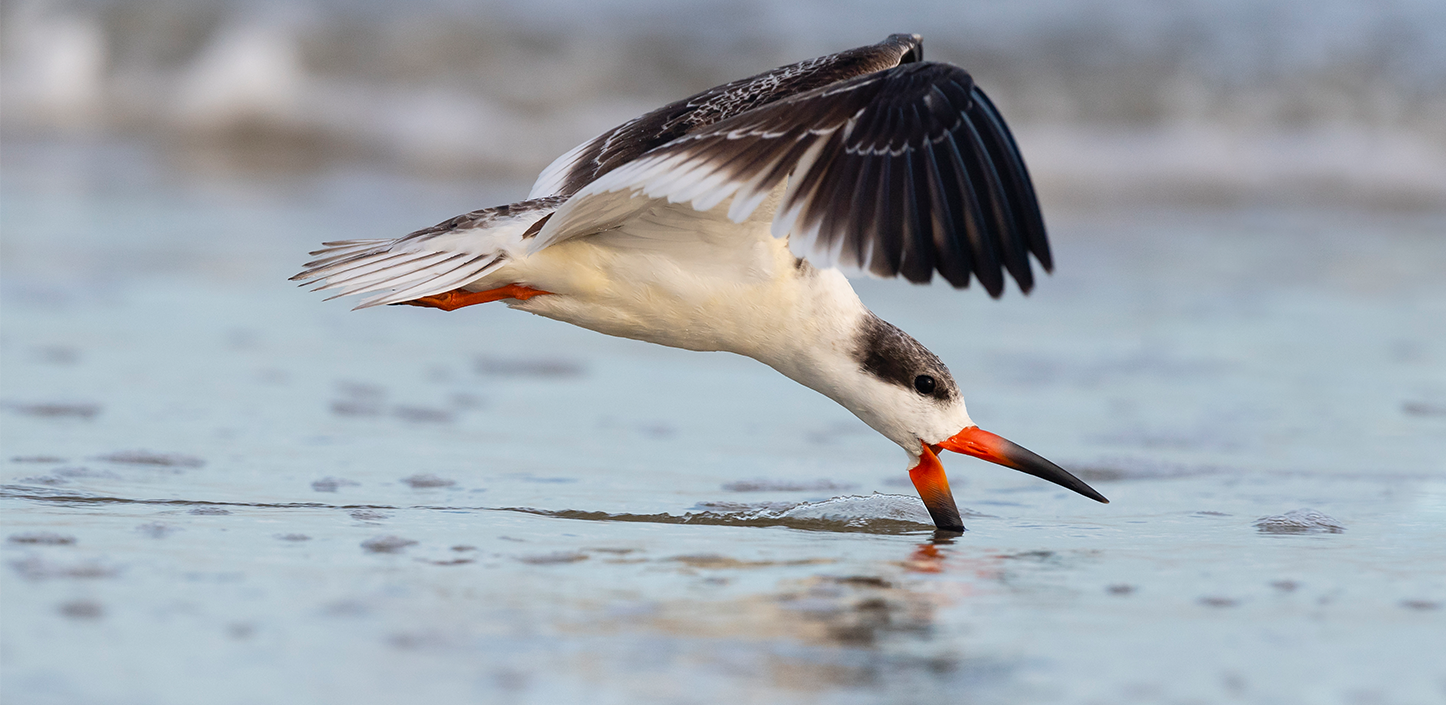
Helping birds of the Gulf Coast bounce back after an oil spill
Sit long enough on one of the beautiful beaches of Florida’s Gulf Coast and you’re likely to see a black skimmer gliding above the glassy water, its lower bill slicing the surface. The instant that lower bill strikes a fish, the skimmer dips its head, snaps its bill closed and flies off with a meal.
You might also enjoy the amusing spectacle of tiny, mottled-white shorebirds — most likely piping, snowy or Wilson’s plovers — skittering along the shore.
The natural beauty and bounty of Florida’s Gulf Coast offer delicious seafood, endless fun and a treasured way of life for hundreds of communities, large and small. These coastal destinations also draw millions of nature-loving visitors, including birders, from around the world.
In the wake of the 2010 Deepwater Horizon oil spill, NFWF has worked closely with state officials, federal agencies and conservation nonprofits to guide the use of more than $2.5 billion that was directed to the Foundation under plea agreements related to the spill. Since its inception in 2013, NFWF’s Gulf Environmental Benefit Fund (GEBF) has awarded more than 90 percent of those restoration funds to projects in the Gulf States that benefit wildlife affected by the disaster.
The GEBF’s 2024 slate of awards continued to provide much-needed support to wildlife along the Gulf Coast, including Florida’s wondrous collection of coastal birds. The fund awarded nearly $15 million to the Florida Fish and Wildlife Conservation Commission and Audubon Florida to increase populations of beach-nesting birds. The fund awarded another $5.3 million to the U.S. Fish and Wildlife Service to restore nesting habitat for wading birds on Sanibel Island.
Such efforts funded through the GEBF in Florida have produced consistent population growth for black skimmers and least terns since 2011, with statewide counts increasing by 50 percent to 60 percent over 10 years of monitoring. These results suggest a significant rebound in the populations of the imperiled coastal bird species. Similar efforts supported by NFWF and other partners across the Gulf Coast build upon these important conservation outcomes.
Such investments will help black skimmers, plovers, terns, egrets, herons, pelicans and other birds continue their long recovery in the aftermath of one of the worst ecological disasters in the history of the United States.
This story originally appeared in NFWF's 2024 Annual Report.